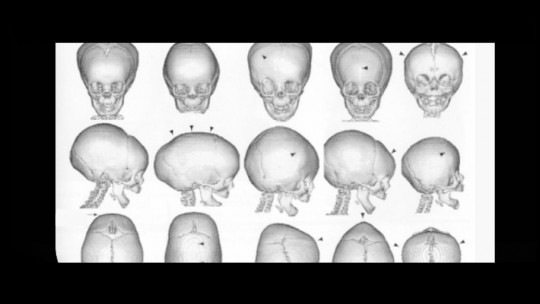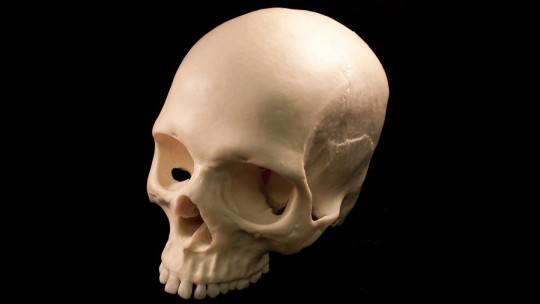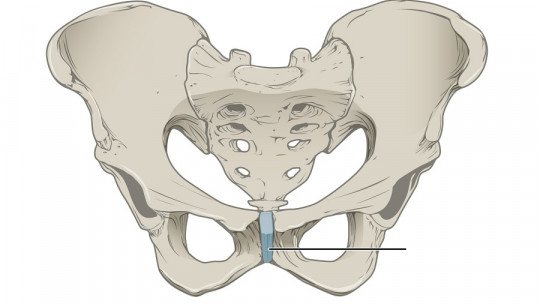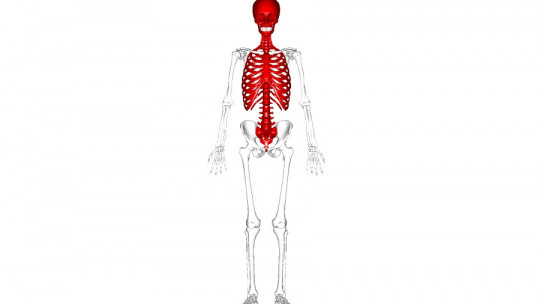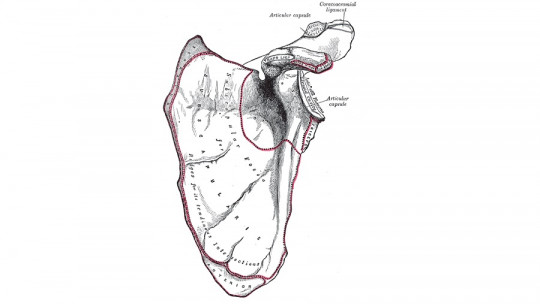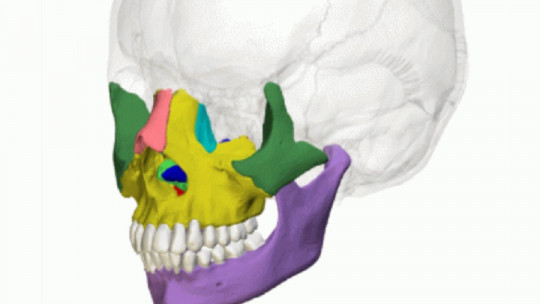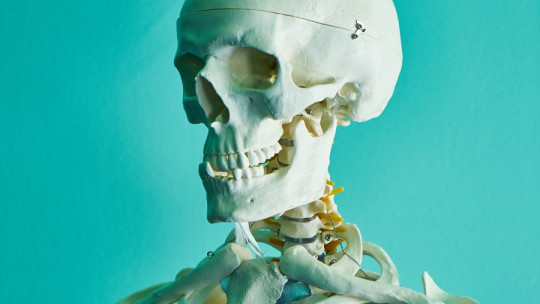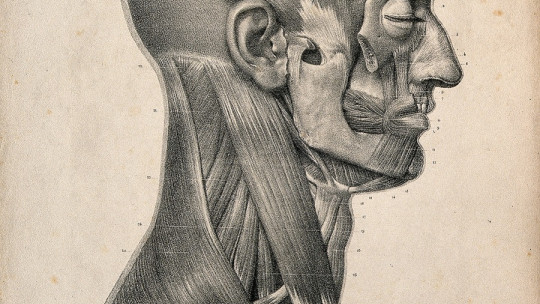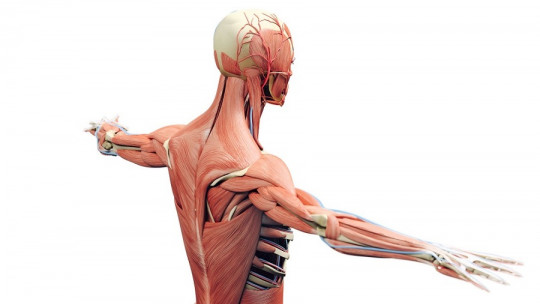It is known that when we are born, the bones of our head are not fully formed Thanks to this, the baby’s head is able to pass through the birth canal, which would otherwise be too narrow. After childbirth, the bones of the skull gradually harden and weld together, slowly enough to allow the growth of the child’s brain and head.
However, sometimes said suturing occurs at a very early stage of development, causing alterations that can have severe consequences. This early suturing is called craniosynostosis
The skull: bones and sutures
The human skull, if we understand as such the bone coverage of the brain (not counting other facial bones such as those of the jaw) is made up of a set of eight bones: frontal, two temporal, two parietal, occipital, sphenoid and ethmoid.
This set of bones are not completely united from birth, but rather they become welded little by little as we develop. The unions between these bones, initially formed by connective tissue although throughout our lives they ossify, are called sutures and fontanelles. In the cranial vault, the points where several bones meet are called fontanelles equally important.
Among the multiple sutures that we have (a total of thirty-seven), the lamboid that joins the parietal and occipital, the metopic that joins the two parts of the frontal, the coronal that allows the frontal and parietal to overlap, and the sagittal that allows that the two parietals meet.
As we said, The bones of the skull are sutured and welded throughout our development but sometimes this union occurs early.
Craniosynostosis
Craniosynostosis is understood as a congenital defect or malformation in which some or all of the bones in the newborn’s skull fuse together sooner than normal Although the sutures generally close around three years of age, in babies born with this malformation the closure can occur in the first months.
This early suturing of the bones of the skull It can have serious effects on a child’s development. The skull does not develop as it should and malformations appear in its structure, also altering the normative development of the brain. In addition, an increase in intracranial pressure is caused as the brain tries to grow, which can have serious consequences. It is not uncommon for microcephaly to occur and for different brain structures to not develop correctly. Hydrocephalus is also common.
The effects that this malformation causes They can vary enormously, and can range from no obvious symptoms to the death of the minor. It is common for patients with craniosynostosis to suffer from developmental delays, intellectual disabilities, continuous headaches, disorientation and incoordination, motor problems that can lead to seizures, or sensory disabilities if they do not receive treatment. Nausea, lack of energy, dizziness and some typical symptoms of depression such as avolition are also common.
In addition, other facial structures and organs may also be compromised, such as the eyes, respiratory tract or oral apparatus, due to morphological alterations. This can lead to blindness or deafness in addition to difficulties breathing, swallowing and communicating.
In short, it is a disorder that can cause severe problems for the child and their correct development. That is why it is recommended to seek early treatment to prevent bone alterations from generating difficulties at the brain level.
Types of craniosynostosis
Depending on the bones that are sutured prematurely, we can find various types of craniosynostosis. Some of the most well-known and common are the following.
1. Scaphocephaly
The most common type of craniosynostosis. It occurs when the sagittal suture closes early.
2. Plagiocephaly
This type of craniosynostosis is what occurs when the coronal suture closes prematurely. It is the most common after scaphocephaly The forehead may appear to stop growing. It can appear bilaterally or only in one of the frontoparietal sutures.
3. Trigonocephaly
The metopic suture is closed early. So the frontal bones close too soon. It usually causes hypotelorism, or close-set eyes
4. Brachycephaly
Coronal sutures are closed early.
5. Oxycephaly
Is considered the most complex and severe type of craniosynostosis In this case all or almost all of the sutures appear closed early, preventing the skull from expanding.
Possible causes
Craniosynostosis is a congenital disorder whose causes are unclear in most cases. It usually happens in a way without precedent in the same family. It is suspected that genetic and environmental factors combine
However, in many other cases this problem has been associated with different syndromes and disorders in which it does appear linked to genetic mutations that may or may not be inherited. An example of this is found in Crouzon syndrome.
Treatment
Treatment of craniosynostosis is done by surgery The surgical procedure should be performed before the subject reaches one year of age because the bones will subsequently harden and there will be more difficulties in correcting the malformations.
It is not an intervention that is carried out solely for aesthetics, but due to the complications that early closure of the skull bones can cause. If the brain did not operate, it would have difficulties developing normally , and during said development a level of intracranial pressure would be reached that could be dangerous. However, early intervention can cause brain and bone development to be normative and not generate alterations in the child’s life.

